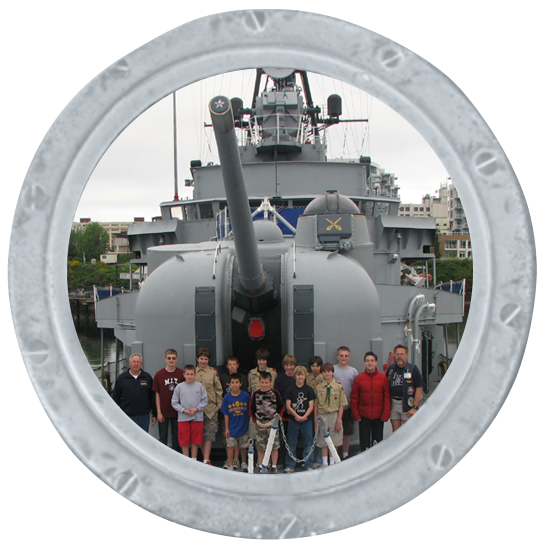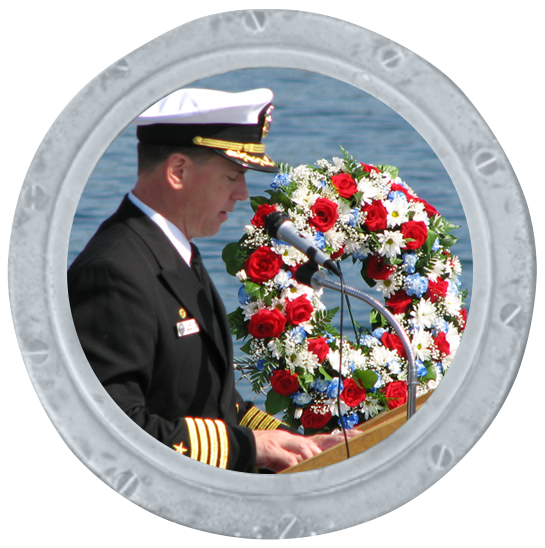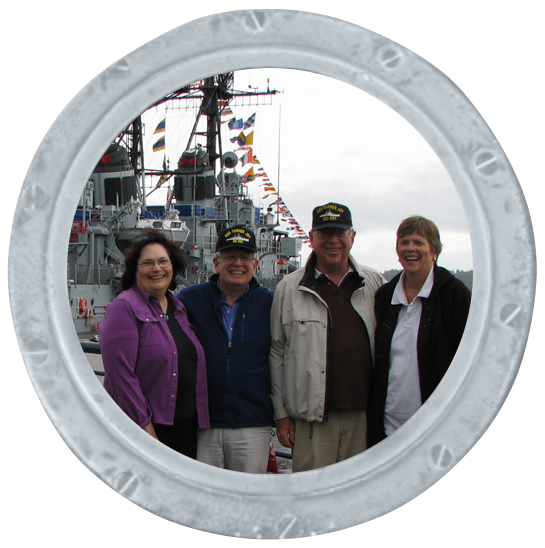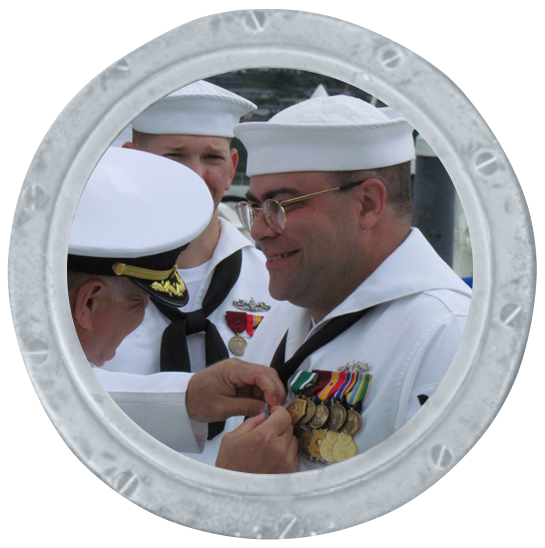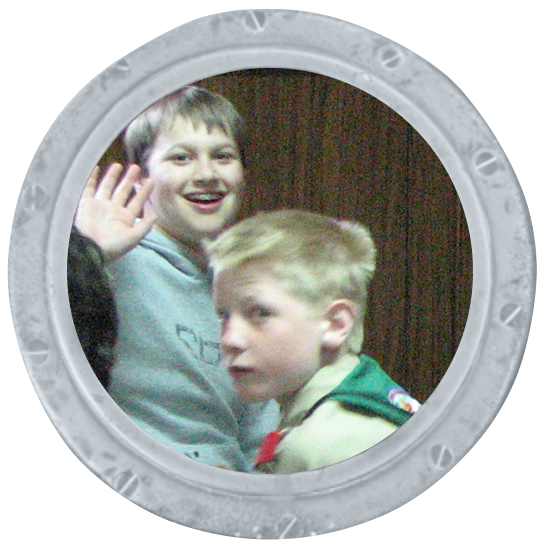War Operations
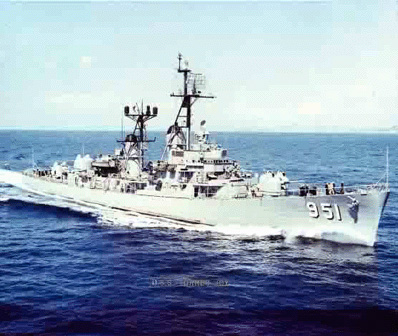 USS TURNER JOY was the last ship in the FORREST SHERMAN – class of destroyers and the first ship in the Navy to bear the name. Her keel was laid down on September 30, 1957 in Seattle, Washington by the Puget Sound Bridge & Dredging Company, launched on May 5, 1958, and commissioned on August 3, 1959, Comdr. Ralph S. Wentworth, Jr. in command.
USS TURNER JOY was the last ship in the FORREST SHERMAN – class of destroyers and the first ship in the Navy to bear the name. Her keel was laid down on September 30, 1957 in Seattle, Washington by the Puget Sound Bridge & Dredging Company, launched on May 5, 1958, and commissioned on August 3, 1959, Comdr. Ralph S. Wentworth, Jr. in command.
Turner Joy’s distinctive service included a double-duty role as flagship for Destroyer Squadron 13 and Destroyer Division 131 with several tours in the Pacific. She also stood air-sea rescue duty near the Marianas Islands for President Dwight D. Eisenhower’s visit to several Asian nations. In terms of history, this vessel is most remembered for her participation in the Gulf of Tonkin incident which escalated the United States involvement in the Vietnam War.
On March 13th, 1964 Turner Joy departed Long Beach to embark upon her most famous, or, depending on your point of view, infamous tour of duty in the Far East. The third WESTPAC of her career began routinely enough. After calling at Pearl Harbor on her way west, Turner Joy joined the USS Kitty Hawk task group for operations in the Philippine Sea, followed by a cruise through the South China Sea to Japan. In late July, Turner Joy, while attached to the USS Ticonderoga carrier group, began making “Desoto” patrols off the coast of Vietnam. These were intelligence collection patrols intended to intercept North Vietnamese Army communications and relay them to South Vietnamese forces.
On the afternoon of August 2nd, USS Maddox (DD 731), under the command of CDR H. L. Ogier, which was engaged in a similar patrol in the Gulf of Tonkin, reported being attacked by three North Vietnamese motor torpedo boats. Maddox returned fire. Ronald G. Stalsberg, a gunners mate in mount 51 puts it this way, “Turret one fired the first shots of the battles in the Gulf of Tonkin, and the first shots fired in anger by the U.S. Navy in the Vietnam War.” As she engaged the torpedo boats she reported up the chain of command and called for assistance. Turner Joy, under the command of Commander Robert C. Barnhart, responded, as did four F-8 Crusaders flying off of USS Ticonderoga. Maddox scored hits on the torpedo boats and the F-8s strafed them, leaving one of them dead in the water and sinking. By the time Turner Joy reached Maddox, the surviving torpedo boats had fled, and both ships were ordered out of the Gulf of Tonkin.
On August 3rd, they were ordered back to the Gulf, under the operational control of CAPT John J. Herrick (Commander of Task Group 72.1), to continue their Desoto patrols in company and to “show the flag” in international waters off the coast of North Vietnam. What happened next has been in dispute since that day.
At about 8PM local time on August 4th, in rough weather and heavy seas, both Maddox and Turner Joy, based on radar and sonar contacts, reported a number of what appeared to be small, high-speed surface craft approaching, but at extreme range. As a precaution, the two destroyers, once again, called Ticonderoga for air support.
By nightfall, radar and sonar plots suggested that North Vietnamese small craft were converging on the two American warships from the west and south. Turner Joy reported that she sighted one or two torpedo wakes, then rang up full speed, maneuvered radically to evade torpedoes, and began firing her 5” guns at the unidentified radar returns.
Over the next three and a half hours, Maddox, Turner Joy, and planes from Ticonderoga fired at the suspected hostile craft and reported that at least two were sunk by direct hits and another two severely damaged, and that the remaining boats retired rapidly to the north. In an after action report, CAPT Herrick, the officer in tactical command, who observed both the August 2nd and August 4th actions from the combat information center in USS Maddox stated, “Review of action makes many reported contacts and torpedoes fired appear doubtful. Freak weather effects on radar and overeager sonarmen may have accounted for many reports. No actual visual sightings by Maddox. Suggest complete evaluation before any further action taken.” He further stated, “Entire action leaves many doubts except for apparent ambush at beginning. Suggest thorough reconnaissance in daylight by aircraft.” When asked for clarification of his reports he said, “My sources of information were from radar scopes, radio circuits and displayed and evaluated information from the CIC of the USS Maddox. I had no opportunity to visually sight by unaided human eye any of the action. However, it is my opinion that certainly a PT boat action did take place.” Interestingly, the statement of Commander Barnhart, Turner Joy’s CO, was somewhat less emphatic: “During the alleged action with the torpedo boats on the night of 4 August 1964 in the Gulf of Tonkin, I was conning the ship. Until I can find a suitable period of time to reflect on the overall engagement, the only evidence I actually saw that would indicate “something” was being hit with our 5″/54 gunfire was a column of black smoke rising from the surface of the water. When I attempted to come around to close the smoke, another surface contact was reported to be closing the Turner Joy from astern. This target was taken under fire also but nothing visually was sighted by me to indicate it was hit. By the time I was able to maneuver the ship around to investigate the column of black smoke previously sighted, it had disappeared from my view. As a general statement, I believe we were attacked by an unknown number of torpedo boats for reasons as set forth in previous messages.”
The reconnaissance Herrick suggested was conducted the next day, and did not locate any debris from a surface gun engagement. No oil slicks, no floating debris, no destroyed ships hulks. Commander Ogier, Maddox’s CO was unequivocal. “I believed at the time that the Maddox was under attack by PT boats. Later I doubted that so many torpedoes could have been fired and have missed. I am now convinced that the torpedo attacks did take place.”
Statements from Turner Joy crewmembers after the engagement were unanimous in their firm belief that they had been attacked. Typical of these is the one from Seaman Dennis Plzak, “I am a radarman seaman and was manning the surface search radar on the night of August 4, 1964. I picked up several small contacts (three to five) on my scope approximately twelve miles away and tracked them into short range. I wasn’t sure of them being genuine contacts until they were in short range. I have spent many hours on the surface search and I evaluate them as definite contacts. It appeared to me that there was a definite plan used by the craft. At one time I held clearly three contacts, one directly astern of us and two moving in and out. Could not tell size of contacts due to short range scale. I saw one contact being hit by burst from our mounts approximately four times and then completely disappear from the scope. I definitely evaluate I held three contacts on my scope.”
Boatswains Mate third class Donald Sharkey was equally adamant. “I saw on 4 August 1964 at about 2300, a PT Boat while engaged in a night gunnery engagement against surface contacts. My station is Mount 32 as 3″/50 second loader. I saw flare off starboard side of ship so was watching same looking for contact. At this time a PT boat came between the ship and the flare bearing about one hundred degrees relative. The outline of this contact was clearly seen by me and was definitely a PT boat.”
However none of the statements mentioned secondary explosions, oil slicks or post explosion fires, all of which you would expect to see if you hit a torpedo boat with a 5” shell.
Whether or not the North Vietnamese attacked the two ships on August 4th remains a mystery. In 1965, President Lyndon Johnson commented privately: “For all I know, our Navy was shooting at whales out there.” John Prados, head of the National Security Archive’s Vietnam and Intelligence Documentation Projects, in his essay The Gulf of Tonkin Incident, 40 Years Later, called it “a complex weaving of fiction from threads of fact.”
The North Vietnamese deny it categorically. In 1995, in a meeting with former Secretary of Defense Robert McNamara, retired Vietnamese Defense Minister Vo Nguyen Giap denied that Vietnamese gunboats had attacked American destroyers on August 4, while admitting to the attack on August 2.
It could well have been that high seas and the “freak weather conditions” mentioned by CAPT Herrick and for which the Gulf of Tonkin is famous, caused “sea return” which an inexperienced or adrenalin charged radar operator classified as legitimate contacts. Unlike the engagement on the 2nd, the action of the 4th was marked by frequent fading of radar contacts and their subsequent reappearance. And fire control systems on both ships had great difficulty locking on for any significant length of time.
But if you read the statements of her captain and crew, they have absolutely no doubt that they were attacked, and in view of the events two days earlier, decided to take aggressive action. No amount of Monday morning quarterbacking will change that.
In any event, the engagements of August 2nd and 4th came to be known as the “Gulf of Tonkin Incident” and prompted retaliation from the United States. President Johnson ordered Operation Pierce Arrow and the next day, August 5th, Ticonderoga, joined by USS Constellation, launched 64 sorties against the bases and oil dumps that supported the North Vietnamese torpedo boats. In the course of those raids, the U.S. lost two planes to anti-aircraft fire, killing LTJG Richard C. Sather, pilot of an A1 Skyraider. The second aircraft was an A-4 Skyhawk piloted by LTJG Everett Alvarez Jr. who became the first U.S. prisoner of war in Vietnam.
That same day, August 5th, in a speech at Syracuse University titled The Communist Challenge in Southeast Asia, President Johnson said, “The Gulf of Tonkin may be distant, but none can be detached about what has happened there. Aggression–deliberate, willful, and systematic aggression–has unmasked its face to the entire world. The world remembers-the world must never forget–that aggression unchallenged is aggression unleashed.” His remarks are ironically compatible with Admiral Joy’s conviction that “only the ‘imminent threat of application of our military power’ would compel Communist governments throughout the world to ‘negotiate seriously.’ He wrote that the ‘greatest single influence on the Korean armistice negotiations was the failure of the United States to take punitive action against China following its entry into the conflict.”
Most importantly the Gulf of Tonkin Incident prompted Congress to pass and President Johnson to sign the Tonkin Gulf Resolution, the legal foundation for increased American involvement in the Vietnam War.
VIETNAM
Following the excitement of the first week in August, the destroyer resumed more routine operations in the South China Sea. She concluded her deployment when she reached Long Beach on 2 October—two months to the day since she had rushed to the aid of Maddox. The destroyer conducted normal operations out of Long Beach until 18 December when she entered the naval shipyard for a three-month overhaul. Late in March, she began refresher training out of San Diego. West coast operations occupied her until 10 July, when she departed Long Beach with DesRon 19, bound once again for duty in the Orient. At the end of a 21-day transit, Turner Joy joined Coral Sea (CVA-43) near the end of the month. During August and the first three weeks of September, the destroyer served both as an escort for the carrier and as a detached radar picket ship.
On 23 September, she moved into the Gulf of Thailand near the west coast of South Vietnam to participate in one of the earliest naval gunfire support missions conducted along that section of the coastline. After a brief respite in Subic Bay for upkeep, the warship returned to the gunline in October, this time along South Vietnam’s southeastern coast between Cape St. Jacques and Chu Lai. On the 25th, she provided call-fire for American and South Vietnamese forces operating ashore in the vicinity of Chu Lai itself. During the mission, her guns destroyed a number of enemy positions and figured prominently in the repulse of a Viet Cong attack. Near the conclusion of that 24-hour action, a 5 inch round misfired; and, during the ensuing efforts to clear the chamber, the shell detonated. The explosion damaged the gun mount, killed three sailors, and wounded three more. That event forced her departure from the combat zone. After landing the three casualties at Da Nang, Turner Joy set course for Subic Bay in the Philippines. After a week of repairs, the destroyer departed Subic Bay in company with Ticonderoga (CVA-14) for screening duty in the South China Sea, followed by port calls at Hong Kong and at Yokosuka, Japan. At the end of the year, she returned to naval gunfire support duty off the coast of South Vietnam.

